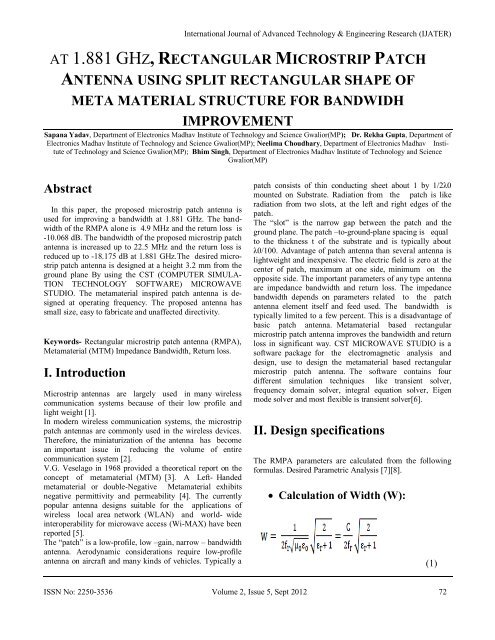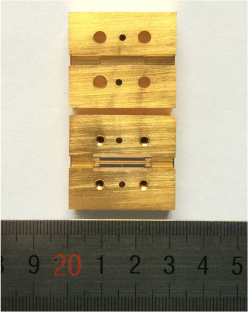

A shorted l /4 RMSA has the same resonance frequency as that of a l/2 RMSA, with half the area. Mobile communication and other applications. Perhaps a combination of various approaches would lead to an optimum broadband configuration. The search for an ideal broadband MSA is still continuing. The methods for increasing the BW of MSA are continuously getting upgraded. However, the efficiency of these antennas is poor because of lossy substrate and requires external magnetic fields, which makes it bulky.

Microstrip antenna theory and design Patch#
Also, the dimensions of the patch are reduced because of the high dielectric constant of the ferrite substrate. The multiresonant behavior of a patch on a ferrite substrate yields a broad BW of about three octaves by changing the magnetic field. The main disadvantage of this configuration is that the radiation pattern varies significantly over the impedance BW as described in Chapter 5.ġ.5.8 Ferrite Substrate-Based Broadband MSAs

Logarithmically and the subsequent patches are fed at 180° out of phase with respect to the previous patch. In this configuration, the patch dimensions are increasedįigure 1.8 (a) Rectangular MSA with a coplanar microstrip impedance-matching network and (b) single-stub matched electromagnetically coupled MSA. The concept of log-periodic antenna has been applied to MSA to obtain a multi-octave BW. Some examples that provide about 10% BW are the rectangular MSA with a coplanar microstrip impedance-matching network and an electromagnetically coupled MSA with single-stub matching as shown in Figure 1.8. The impedance-matching networks are used to increase the BW of the MSA. Besides increasing the BW, these configurations also provide an increase in gain as described in Chapter 5.ġ.5.6 Impedance-Matching Networks for Broadband MSAs A probe-fed single rectangular or circular patch located on the bottom layer has been used to excite multiple rectangular or circular patches on the top layer, respectively. The planar and stacked multiresonator techniques are combined to further increase the BW and gain. Multilayered configurations using both electromagnetic as well as aperture coupling are described in Chapter 4. The drawback of these structures is the increased height, which is not desirable for conformal applications and increased back radiation for aperture-coupled MSAs. The multilayer broadband MSAs, unlike single-layer multiresonator configurations, show a very small degradation in radiation pattern over the complete VSWR BW. A BW of nearly 70% has been obtained by stacking patches with resonant apertures. Two patches of rectangular or circular shapes, which are stacked on each other in different dielectric layers yield around 30% BW. The coupling to the patch from the feed line can be maximized by choosing the optimum shape of the aperture. Two different dielectric substrates could be chosen, one for the patch and the other for the feed line to optimize the individual performances. In the aperture-coupled MSA, the field is coupled from the microstrip feed line placed on the other side of the ground plane to the radiating patch through an electrically small aperture/slot in the ground plane, as shown in Figure 1.3(c).

Two layers may be separated by either air-gap or foam yielding BW of 15–30%.


 0 kommentar(er)
0 kommentar(er)
